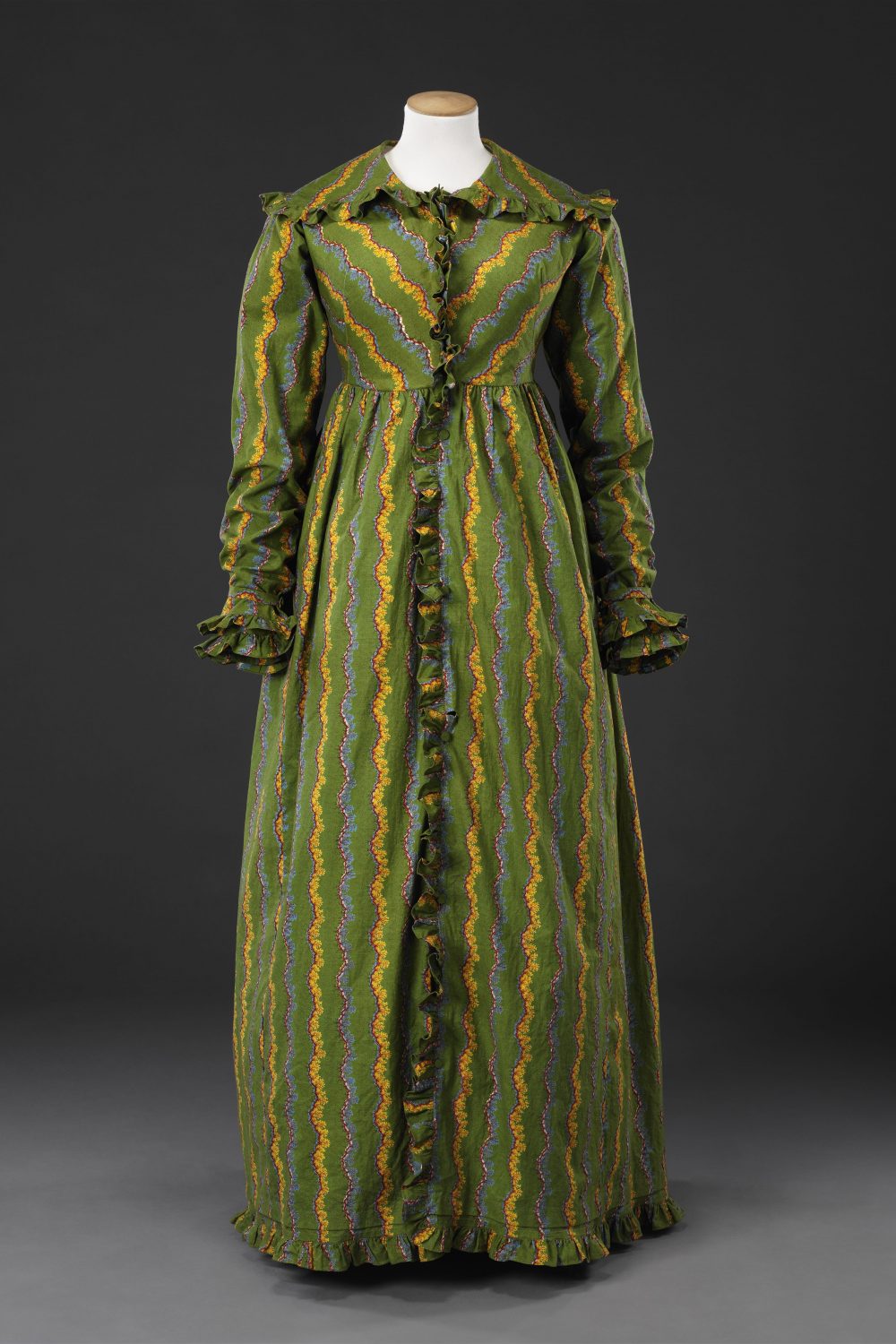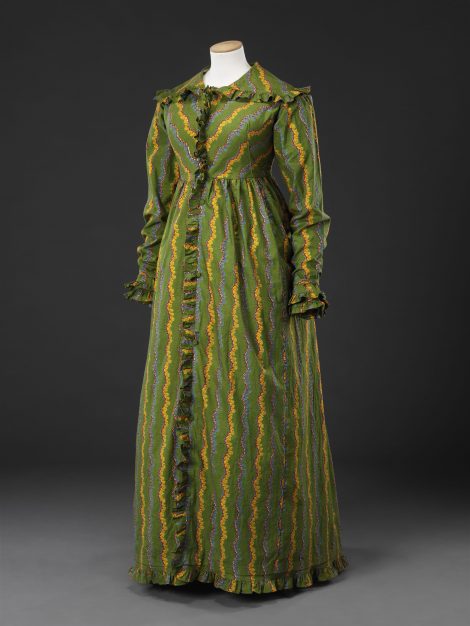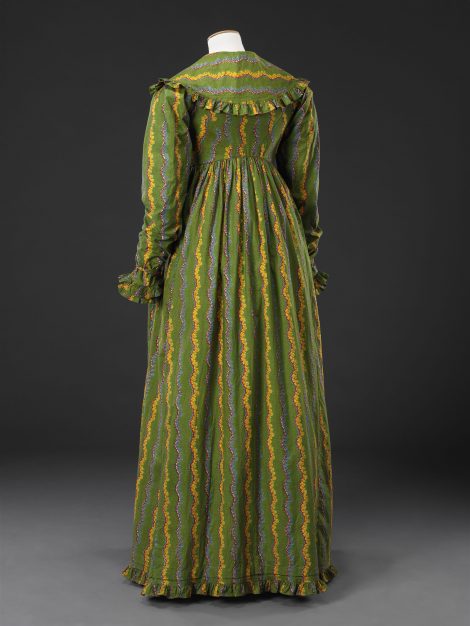This informal garment, worn at home over nightwear or underwear, has been made of cotton printed by a method known as Lapis. Developed in in Lancashire and Munster in north-eastern France, and most commonly in use between 1808 and 1840, this technique was a time-consuming and sophisticated process that would have made the finished fabric an expensive purchase. A series of stages involved both block and cylinder printing, dying and overdying, resist pastes and discharging to produce the vivid colours of this gown that are characteristic of the Lapis process. The red elements of its design were roller printed with a metal cylinder engraved with vertical meandering stems from which branches seaweed like vegetation. So fine were the details achievable by this method that the red speckles cover the fronds that branch out over green ground are barely discernible to the naked eye.
The quality of the gown is also evident in its construction. It is trimmed with matching frills that have been whipped with tiny stitches onto internally bound edges bordering the collar, front opening, hem and wrists; these frills not only soften the garment’s strident colouring but also give a feeling of the romantic historicism that was prevalent in contemporary fashion. The high-waisted bodice with bias-cut front, following those of dresses, is lined with white cotton, as are the sleeves.
Morning or Dressing Gown
Second Half of the 1820s
Cotton


